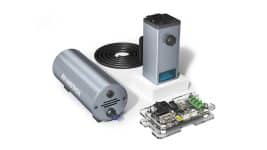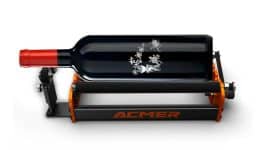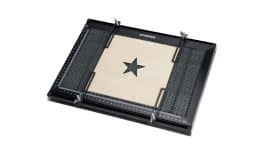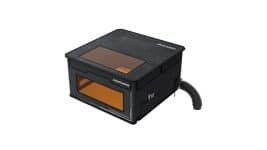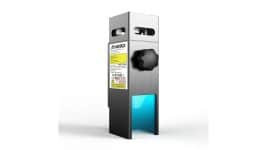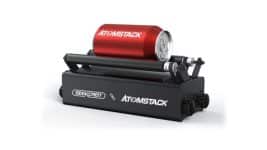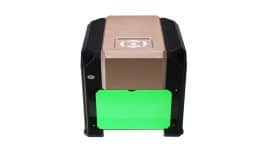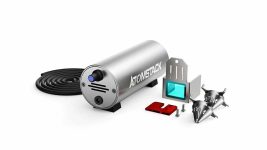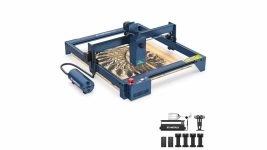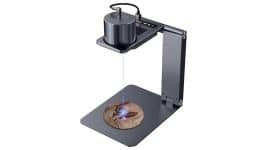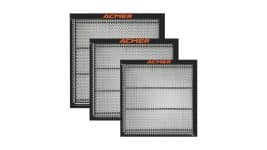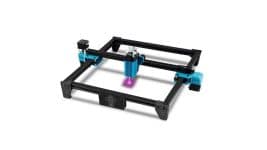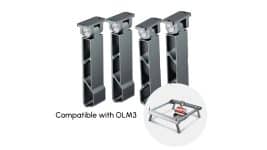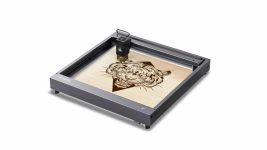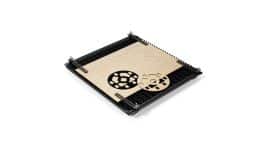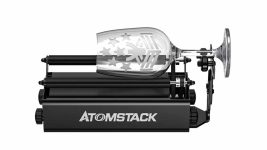
Laser Engraver Buying Guide
Are you considering buying a laser engraver? Look no further! This comprehensive buying guide will help you navigate through the process and make an informed decision. Whether you’re an artist looking to add a personal touch to your creations or a business owner wanting to customize products, a laser engraver can be a valuable tool.
In the first paragraph, we will explore the importance of determining your engraving needs and considering power and speed options. Understanding what you plan to use the laser engraver for will help you choose the right model. Are you looking to engrave wood, metal, or glass? Do you need a machine with high power and speed capabilities, or will a more affordable option suffice? These are some questions to consider as you begin your search. Additionally, evaluating software compatibility is crucial. You want to ensure that the laser engraver you choose is compatible with the design software you plan to use. These factors will ensure that you find a laser engraver that meets your specific requirements.
Determining Your Engraving Needs
Determining your engraving needs is crucial when selecting the appropriate laser engraver. Before you start browsing through various models and brands, it is important to have a clear understanding of what you plan to use the engraver for. Are you planning to engrave on wood, metal, glass, or plastic? Different materials may require different types of laser engravers. Additionally, you should consider the size and complexity of the designs you want to engrave. Some laser engravers are better suited for small and intricate designs, while others are more suitable for larger and simpler designs. By determining your engraving needs upfront, you can narrow down your options and find the laser engraver that best meets your requirements.
Another aspect to consider when determining your engraving needs is the volume of your engraving projects. Are you planning to use the engraver for occasional personal projects or do you have a business that requires continuous engraving? The volume of your projects can influence the type of laser engraver you should choose. If you have high-volume projects, you may need a laser engraver with a faster engraving speed and a larger working area. On the other hand, if you only have occasional projects, a smaller and slower engraver may suffice. By understanding your engraving needs in terms of volume, you can ensure that the laser engraver you choose can handle your workload efficiently.
Considering Power and Speed Options
When it comes to choosing the right laser engraver for you, make sure to consider the power and speed options that will best suit your needs. The power of the laser engraver determines how quickly and deeply it can engrave into different materials. Higher power lasers are capable of engraving through thicker materials, such as wood or metal, while lower power lasers may be more suitable for engraving on softer materials like leather or acrylic. It is important to assess the types of materials you plan to work with and choose a laser engraver with sufficient power to achieve the desired results.
In addition to power, the speed of the laser engraver also plays a crucial role in the efficiency of your engraving projects. Faster engraving speeds allow you to complete more engravings in a shorter amount of time, increasing your productivity. However, it is important to strike a balance between speed and quality. Engraving too quickly may result in a lower quality finish, while engraving too slowly may be time-consuming and inefficient. Consider the intricacy and detail of the designs you plan to engrave, and choose a laser engraver with adjustable speed settings that can accommodate your specific requirements. By carefully considering the power and speed options of a laser engraver, you can ensure that you select a machine that will meet your engraving needs effectively and efficiently.
Evaluating Software Compatibility
To ensure a seamless experience, it’s essential to evaluate if the software you plan to use is compatible with your chosen laser engraving machine. Different laser engravers often come with their own proprietary software that is specifically designed to work with their machines. Before making a purchase, it’s important to check if the software provided by the manufacturer is suitable for your needs. Consider the features and capabilities of the software, such as design tools, file compatibility, and ease of use. Make sure it supports the file formats you commonly work with, such as SVG, DXF, or BMP. Additionally, check if the software allows for customization and flexibility in adjusting parameters like power, speed, and resolution. Having software that is compatible and user-friendly can greatly enhance your experience and productivity with the laser engraving machine.
In some cases, you may already have a preferred software for designing or editing graphics that you want to use with your laser engraver. In such situations, it becomes crucial to determine if the software is compatible with the engraving machine you are considering. Look for information on the manufacturer’s website or contact their customer support to inquire about compatibility. Some laser engravers may have plugins or extensions available for popular design software like Adobe Illustrator or CorelDRAW, allowing you to seamlessly transfer your designs to the machine. This integration can simplify your workflow and save you time by eliminating the need for additional software or conversions. Evaluating software compatibility ensures that you can efficiently utilize your preferred tools and maximize the potential of your laser engraving machine.
Setting a Budget for Your Purchase
Setting a budget for your purchase is crucial in order to make an informed decision about the cost of acquiring the right equipment. When it comes to buying a laser engraver, there are various factors that can affect the price range. The size and power of the machine, as well as the additional features it offers, can greatly impact the cost. It is important to consider your specific needs and requirements before setting a budget. Determine the size of the items you plan to engrave and the level of detail you require. This will help you decide on the appropriate power and capabilities of the engraver, which in turn will affect the price.
In addition to the initial purchase cost, it is also important to consider the maintenance and operational costs associated with a laser engraver. These costs can include replacement parts, maintenance services, and consumables such as laser tubes or lenses. It is advisable to research and compare different brands and models to get a better understanding of the ongoing costs. Setting a budget that takes into account both the initial purchase price and the long-term expenses will ensure that you find a laser engraver that meets your needs without breaking the bank.
Overall, setting a budget for your laser engraver purchase is essential to make a well-informed decision. Consider your specific requirements, research various options, and factor in both the upfront and ongoing costs. By doing so, you will be able to find the right laser engraver that fits within your budget and meets your engraving needs effectively.
Researching and Comparing Laser Engraver Models
Explore different models and compare their features, capabilities, and prices to find the perfect laser engraver for you. When researching and comparing laser engraver models, it is important to consider your specific needs and requirements. Start by identifying the materials you plan to engrave, the size and thickness of the objects, and the level of detail you want to achieve. This will help you narrow down your options and focus on models that are capable of handling your specific projects.
Next, take the time to thoroughly research and compare different laser engraver models. Look for reviews and feedback from other users to get an idea of the performance and reliability of each model. Pay attention to the features and capabilities offered by each model, such as the maximum engraving area, laser power, and engraving speed. Consider whether the machine is suitable for both hobbyist and professional use, and if it offers any additional features that may be beneficial to you.
In addition to features and capabilities, compare the prices of different laser engraver models. Remember that price should not be the sole determining factor, as quality and performance are equally important. However, it is essential to find a model that fits within your budget. Consider the long-term costs as well, such as maintenance and replacement parts. By thoroughly researching and comparing different laser engraver models, you can make an informed decision and find the perfect machine that meets your needs and budget.
Frequently Asked Questions
What safety precautions should I take when using a laser engraver?
When using a laser engraver, it is important to take safety precautions. These include wearing protective eyewear, ensuring proper ventilation, keeping flammable materials away, and never leaving the machine unattended while in operation.
Are there any specific materials that cannot be engraved with a laser engraver?
Yes, there are specific materials that cannot be engraved with a laser engraver. Examples include materials that are highly reflective, such as metals, as well as materials that release toxic fumes when heated, like PVC.
Can a laser engraver be used for both personal and commercial purposes?
Yes, a laser engraver can be used for both personal and commercial purposes. It offers versatility in engraving on various materials like wood, metal, glass, and more, making it suitable for both professional and personal projects.
What maintenance is required for a laser engraver?
Maintenance for a laser engraver includes regular cleaning of the lens, mirrors, and machine components. Additionally, checking and replacing the coolant, cleaning the exhaust system, and calibrating the machine are necessary to ensure optimal performance and longevity.
Can a laser engraver be used for both cutting and engraving?
Yes, a laser engraver can be used for both cutting and engraving. It utilizes a high-powered laser beam to burn or vaporize materials, allowing for precise and detailed cutting as well as engraving designs on various surfaces.
Conclusion
In conclusion, purchasing a laser engraver requires careful consideration of your engraving needs, power and speed options, software compatibility, and budget. By determining the specific materials and designs you plan to engrave, you can choose a laser engraver that meets your requirements. Additionally, considering the power and speed options will ensure that you can achieve the desired engraving results efficiently. It is also important to evaluate software compatibility to ensure seamless integration with your existing design software. Finally, setting a budget and researching and comparing different laser engraver models will help you make an informed decision and find the best engraver for your needs. With these factors in mind, you can confidently purchase a laser engraver that will meet your engraving needs and provide you with high-quality results.
